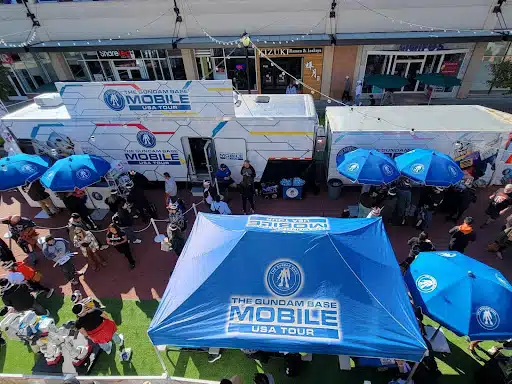People talk. For brands and marketing managers, this can be a double-edged sword. Consumers talk about the products and services they liked but also about those they didn’t appreciate so much. They encourage their friends and family members to try the same products or go for the same service they did, or they can urge them to find a different option, depending on the consumers’ own experience.
Word of Mouth marketing strategies (WOM) are powerful marketing tools and are often described as “The world’s most effective, yet least understood marketing strategy.” And it is one of the few traditional marketing tactics that still work today.
In the past, WOM used to be about actual conversation, one person telling another about a good book they read or a tasty dish they ate at a restaurant. However, ever since the advent of social media, the scope of what falls under word of mouth has drastically increased. It is no longer about the physical act of talking, but rather about social networking, tweeting, posting on Facebook, and creating Instagram Stories.
Word of Mouth includes discussing products (“The new iPhone 11 is amazing!”), sharing content related to brands or products (product ads on YouTube), direct recommendations, and even passing mentions. It doesn’t matter whether any of this is done face-to-face or in online communities via social media posts and reviews. It all counts, especially if people trust the source.
Why is Word of Mouth advertising important?
If your best friend recommended a good store for you, would you want to go there? Would you look the store up online, see what it’s about, and consider purchasing from it? If a family member came to you with high praise for a new type of coffee, would you be curious about trying it?
Word of mouth marketing is an invaluable element in increasing brand awareness and driving trials of your brand. Nielsen reports that 92% of consumers trust recommendations from friends and family more than marketing campaigns. When making purchasing decisions, a whopping 76% of people trust online reviews written by strangers in much the same way they trust their loved ones.
There is no doubt that a word of mouth marketing strategy can greatly influence your business and online reputation. The more people talk about your brand, the more your brand awareness increases, and the more potential customers will flock to you. Spreading the word about a good product or brand is what helps you distinguish yourself from your competitors and propels you to the top of your industry.
Organic WOM vs. WOM Marketing
We did mention that WOM marketing is difficult to control, but that doesn’t mean there aren’t ways to attempt it. WOM can come in two forms. Organic WOM occurs naturally when consumers test your brand, are happy with it, and want to share information about it, Marketing WOM is when brands organize targeted efforts to encourage consumers to spread positive word of mouth about their products.
Generally speaking, organic word of mouth far outweighs any word of mouth marketing campaign you may come up with. That is not to say that WOM marketing strategies are ineffective. It’s simply the fact that consumers have more trust issues with ads and brand marketing strategies in general than with regular, everyday people recommending a brand. It has even come to the point that influencer marketing is no longer as effective because consumers know that an influencer is a paid brand advocate. 74% of consumers use at least one advertising avoidance strategy, meaning they likely won’t even see the WOM stimulation campaign you’re trying to launch.
What drives consumers to talk about a brand
There have been countless studies diving into the psychology of word of mouth. Why people talk about some brands more than others, what moves them to recommend a product or service when they are more inclined to share a brand social media post, and other such cases. Through this extensive research came a list of the five key influencers that drive word of mouth:
- Social Currency
It is human nature to want to look good in front of others. This ‘looking good’ can be in an actual physical sense (appearance-wise), but it can also be in terms of accomplishments, favorable financial status, or any similar criteria. If your brand is prestigious in some way, or if it makes your consumers look good in the eyes of their peers, they are more likely to talk about it.
- Emotional Connection
Simply put, if people care, they will spread the word. Building a strong emotional connection with your consumers is key to generating positive WoM. Emotional connection is the key to bond consumers and brands on a deeper level.
- Popularity
This may be a bit of a paradox, but the more popular something is, the more people will talk about it. This may not be of any use if your brand is just starting out.
- Practical Value
If your product is practical, useful, unique, and/or entertaining, there is a higher chance that consumers will spread the word about it. If they had a positive experience with your brand and your quality product, they will want their friends and family to have it, too. One happy customer easily makes more.
- Societal Impact
Finally, 53% of consumers believe that every brand has a responsibility to get involved in at least one social issue that doesn’t impact their business directly. The significance of corporate social responsibility shouldn’t be underestimated. Brands that give back to society, that focus on sustainability and preserving the environment, and care about community welfare rank high with consumers and the brand’s own employees.
Some amazing examples of CSR include Johnson & Johnson, a brand focused on green, renewable energy and reducing their carbon footprint, Google, who is environmentally friendly, Pfizer who is raising awareness for non-infectious diseases and providing affordable healthcare to impoverished communities, and more.
Consumers need to know that your brand is bigger than itself. Your story, your business model, and your marketing message need to be about a lot more than just your products to encourage consumers to talk about them.
The bottom line is that consumers want authenticity and transparency from your brand. Find a way to be interesting. Make your consumers happy. Earn their respect, and they will generate Word of Mouth for you without any additional effort on your part.
Experiential marketing and stimulating WOM
A useful way to create word of mouth (that is both organic and marketing-driven, in a way) is to plan and execute an experiential marketing campaign. Experiential marketing is great for taking consumers out of their daily lives and putting them in a new environment that will stimulate all of their five senses. This immersive experience will help bring them closer to your brand, find out more about it, and hopefully have a lot of fun at the same time.
The entire purpose of an experiential event or campaign is to leave a lasting, positive impression on consumers who will spread that impression around. Here is how experiential marketing drives WoM:
1. Cultivating brand fanatics
Customer loyalty is essential in running a business. Brand fanatics – consumers who will choose your brand over your competitors repeatedly – are not only frequent buyers, but they also recommend your brand at a higher rate. (71% as opposed to the 45% recommendation rate of regular consumers.)
Experiential marketing events allow consumers to get to know your brand more. They feel the emotions you want your brand to elicit, and they learn about the story of your brand and what it stands for. If they like what they learn, they become more loyal to the brand, and with that comes more positive WoM.
2. Encouraging customer feedback
Direct customer engagement is one of the many benefits of experiential marketing. Through your brand ambassadors and active communication, consumers dive deeper into your brand, but they also have an opportunity to give feedback on the spot.
Listen to what your consumers have to say. Motivate them to leave their opinions and impressions, even if they are not completely positive ones. Through customer feedback, you can catch a glimpse of what your customers are saying when they’re talking about your brand in private.
3. Delivering unforgettable customer experiences
Creating an event – an experience – that leaves the consumers feeling fulfilled and exhilarated is a surefire way to get them talking about your brand. Experiential marketing is all about that wow factor, that moment when consumers become certain that they need to try your product right away.
It goes without saying that, if they have a blast at an experiential event, they will tell everyone they know about it. After evoking positive emotions in your consumers and providing them with a memorable experience, it is only a matter of time before you start reaping the benefits of that stellar Word of Mouth.
Want to work directly with an accomplished experiential marketing agency with 25 years of experience? Pro Motion is an industry leader in creating engaging, effective campaigns. Give us a call at 636.577.8507.
Learn More About Experiential Marketing from PMI President Steve Randazzo in his book Brand Experiences: Building Connections in a Digitally Cluttered World. Click here to download 2 free chapters!




